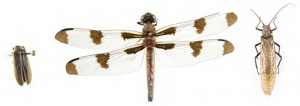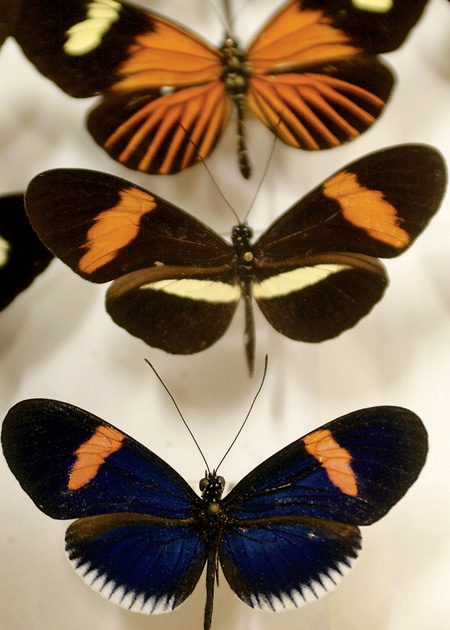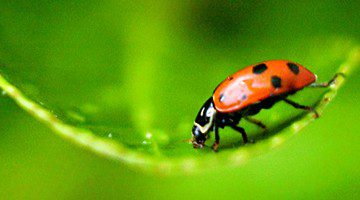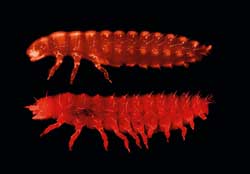Check out the three flies that BYU’s bug guys are excited about.
Fireflies . . . in Utah?
Flashing fireflies have rarely been documented west of Kansas—until now. “We’ve found evidence for at least two species of flashing firefly in Utah,” says biology professor Seth M. Bybee (BS’04), who studied populations native to Utah this summer. Fireflies—actually a type of beetle—light up to find mates: “In [one of] the Utah species we’re looking at, the male has a flickering flash. The female has more of a glow,” he says.
Flashing fireflies aren’t new to Utah; they’ve just never been studied before. Because they thrive in damp, isolated areas and flash only after 10 p.m. during mating season, they’re hard to spot. Since his work was publicized, Bybee has heard of about 30 more populations. “This is really a public-informed project—citizen science,” he says.
A Bug’s Eye
With eyes that can see from ultraviolet to red light, dragonflies see colors and patterns invisible to humans. Bybee traces vision genes in dragonflies and their cousins, damselflies, to map through branching diagrams the development of their color vision systems over time. “Basically, we’re doing dragonfly genealogy,” explains Bybee. “BYU should be good at genealogy.”
The technical term is phylogeny, which Bybee uses to research the origins of dragonfly color vision and study how dragonfly body colors might have influenced the development of color-vision genes. Bybee studies a group of dragonflies called skimmers, which have double the number of color-vision genes of other groups. He’s found that these dragonflies, predictably, have better color vision—and the group is likewise more colorful and diverse than other dragonflies.
Buggy Water Is Good to Drink
Here’s a riddle, says biology professor C. Riley Nelson (PhD ’86): You’re lost in the mountains and find two streams. One’s filled with bugs and the other isn’t—which would you drink? “Intuition says no bugs,” says Nelson. “But if the water isn’t good enough for bugs, is it good enough for you?” To judge a river’s health, Nelson looks for stoneflies—the aquatic insect least tolerant of silt and toxic chemicals.
Nelson studies stoneflies in Provo, like the one pictured above, and in Mongolia, helping the country protect its environment while the economy industrializes. When stoneflies disappear, he says, it’s likely pollution is on the rise. Last year he and former student Sarah Walker Judson (BS ’08, MS ’10) published a complete taxonomy of Mongolian stoneflies that officials in the developing nation use to monitor water quality.










